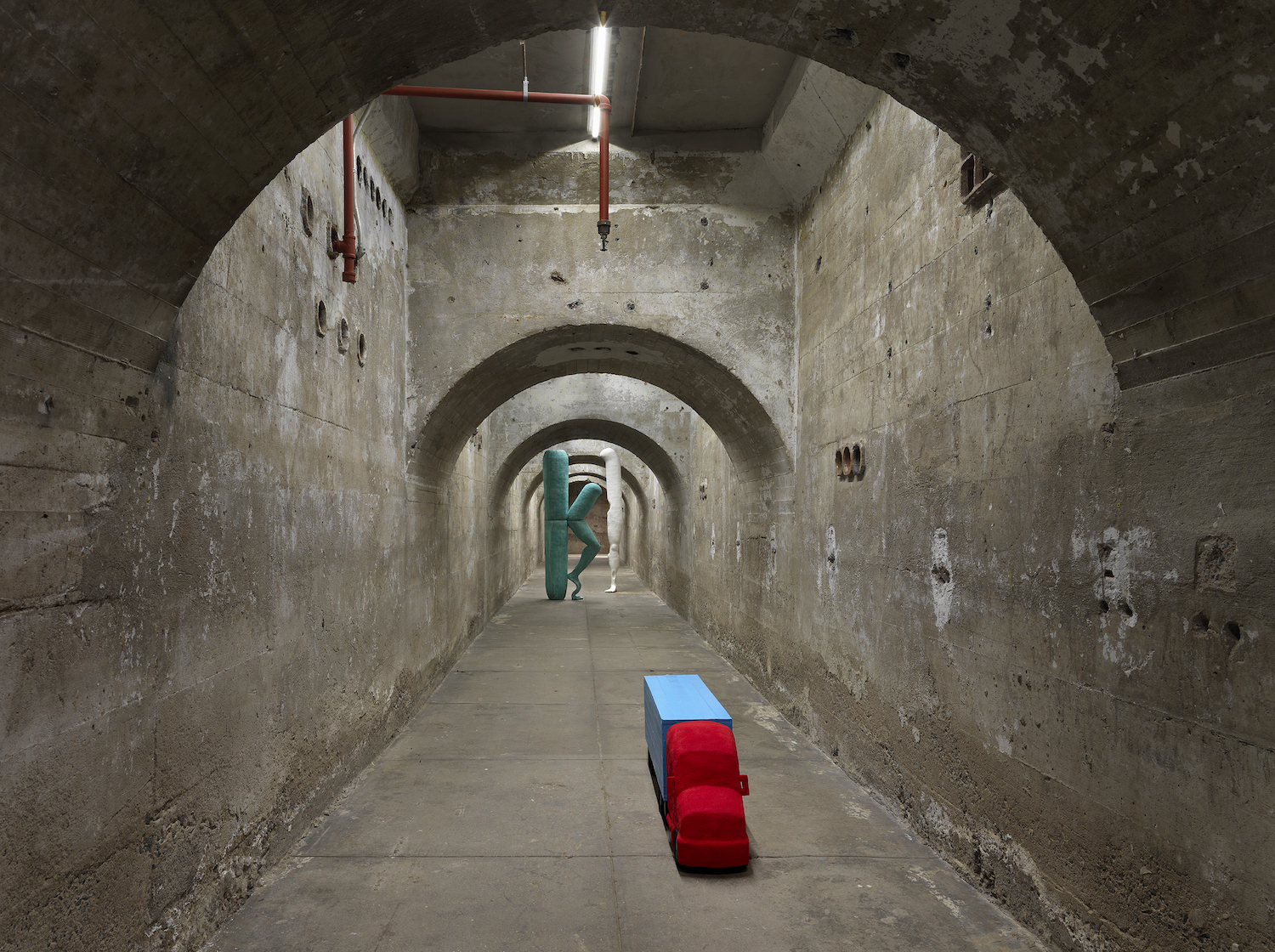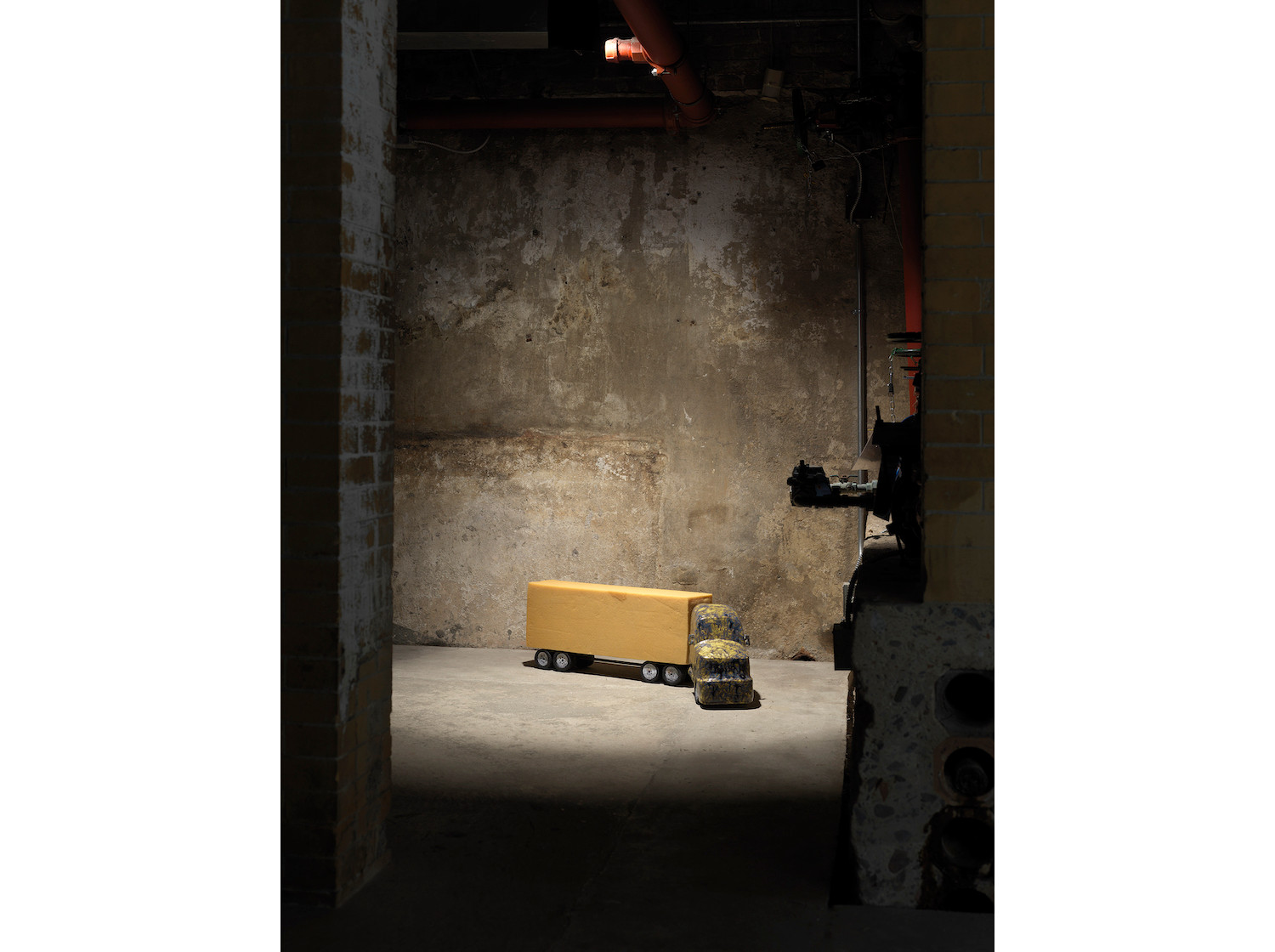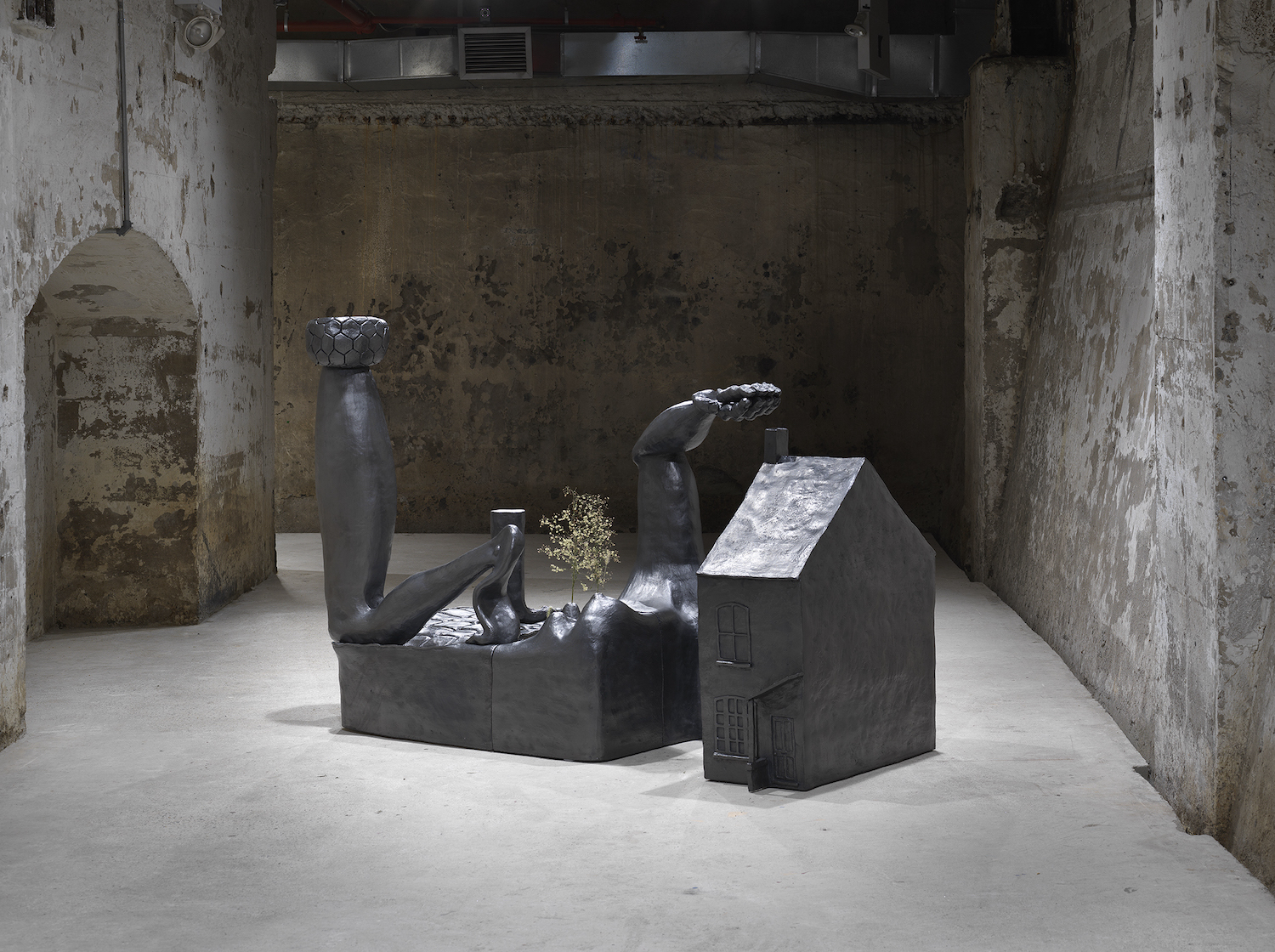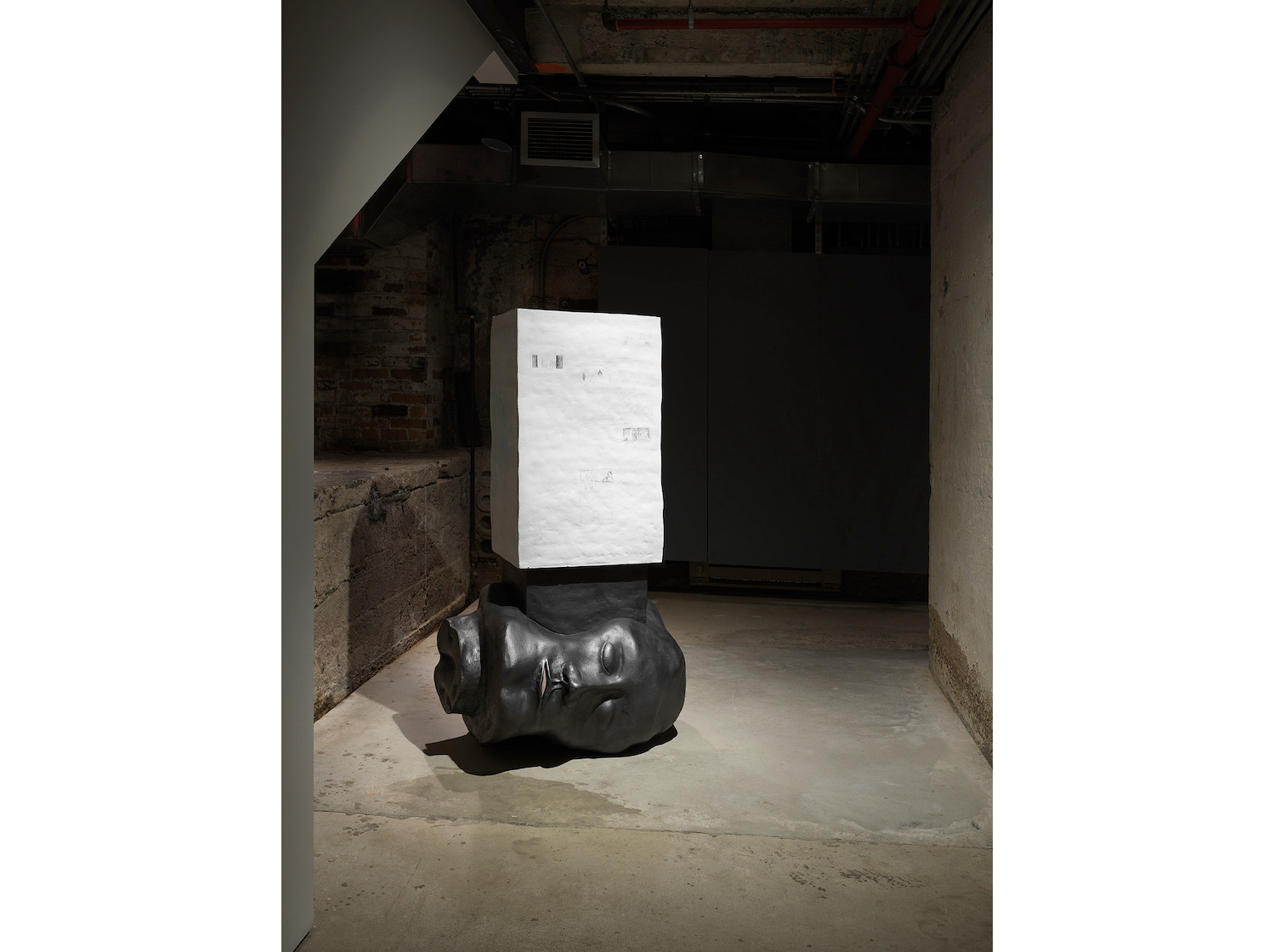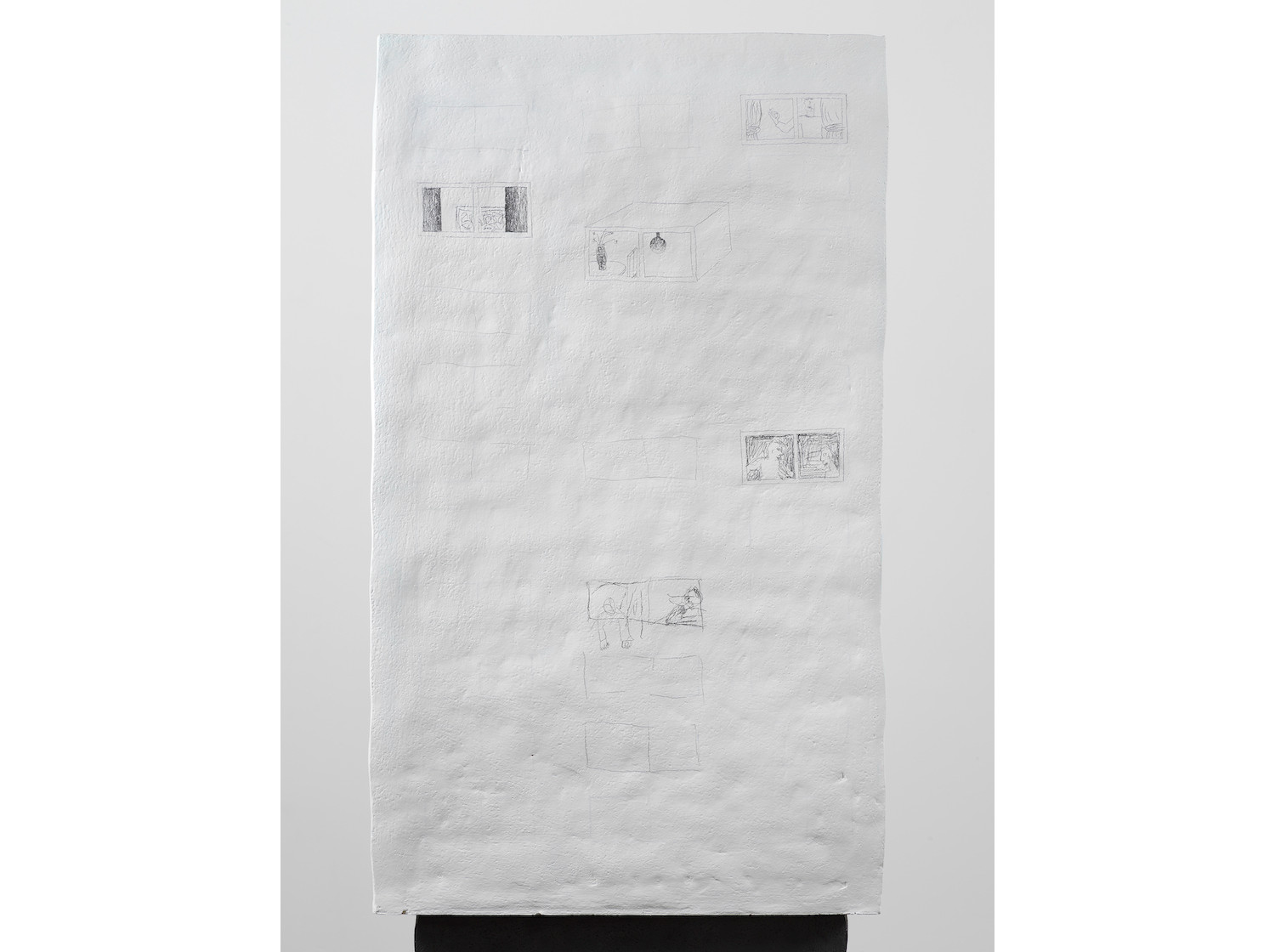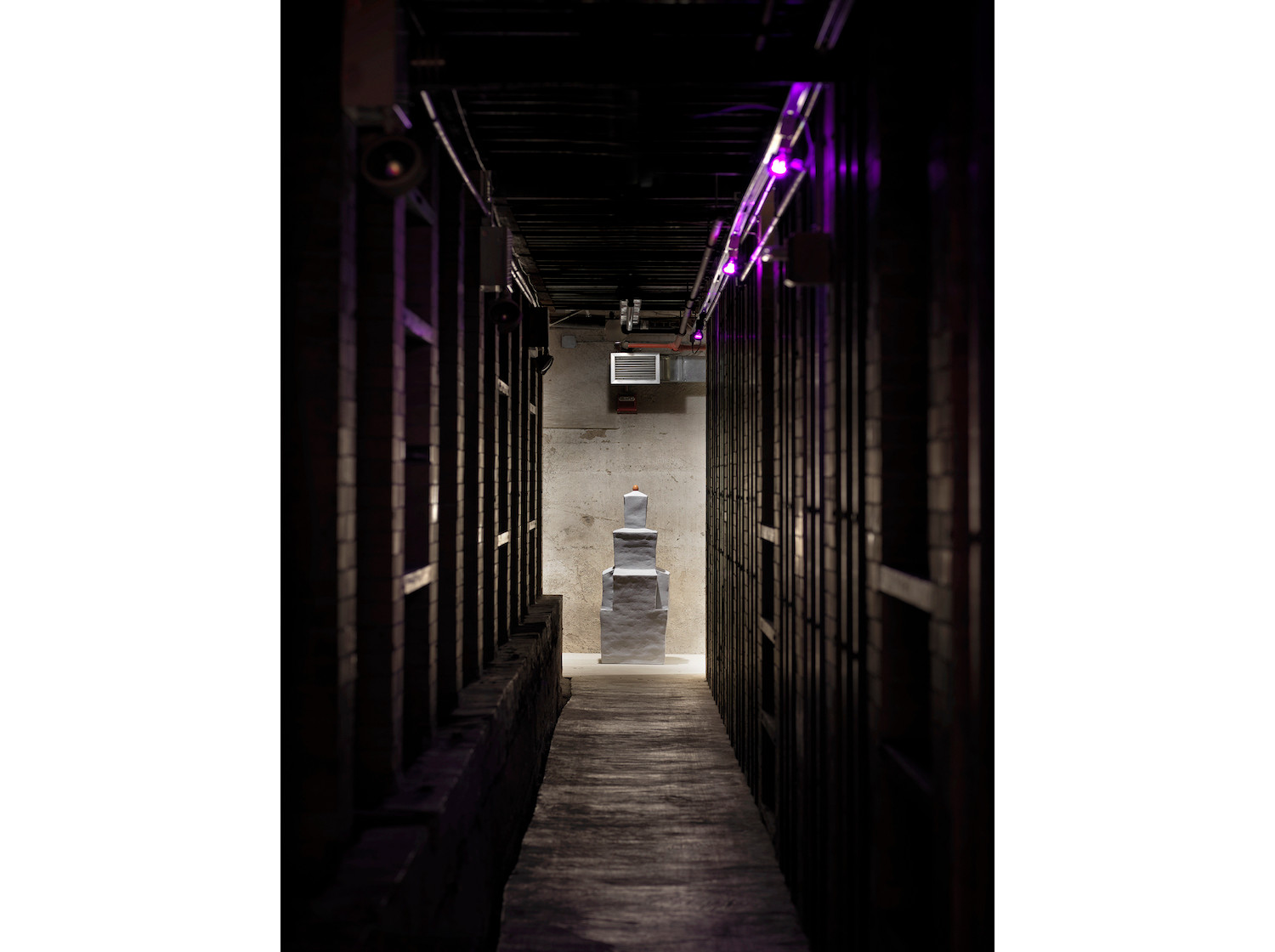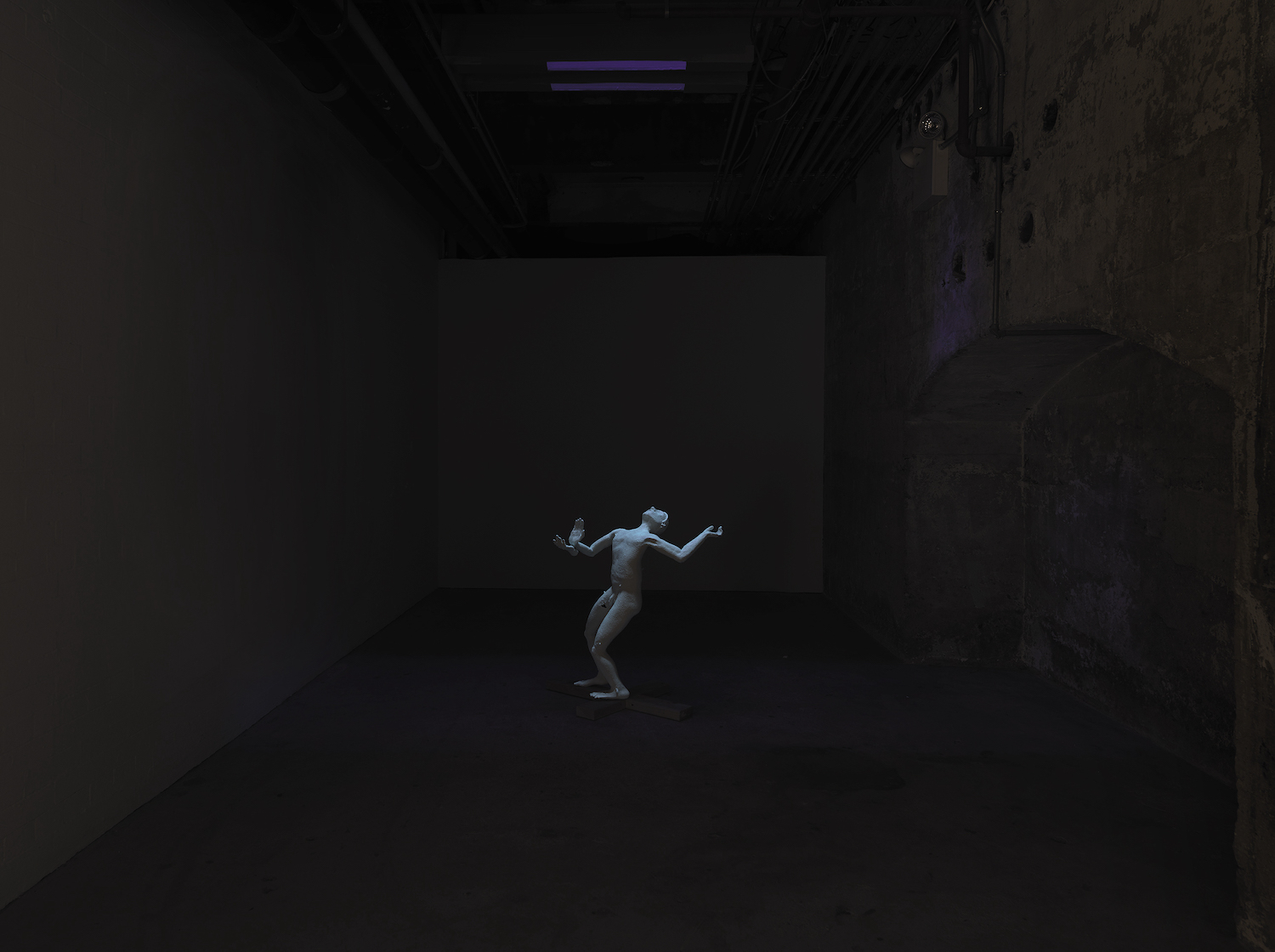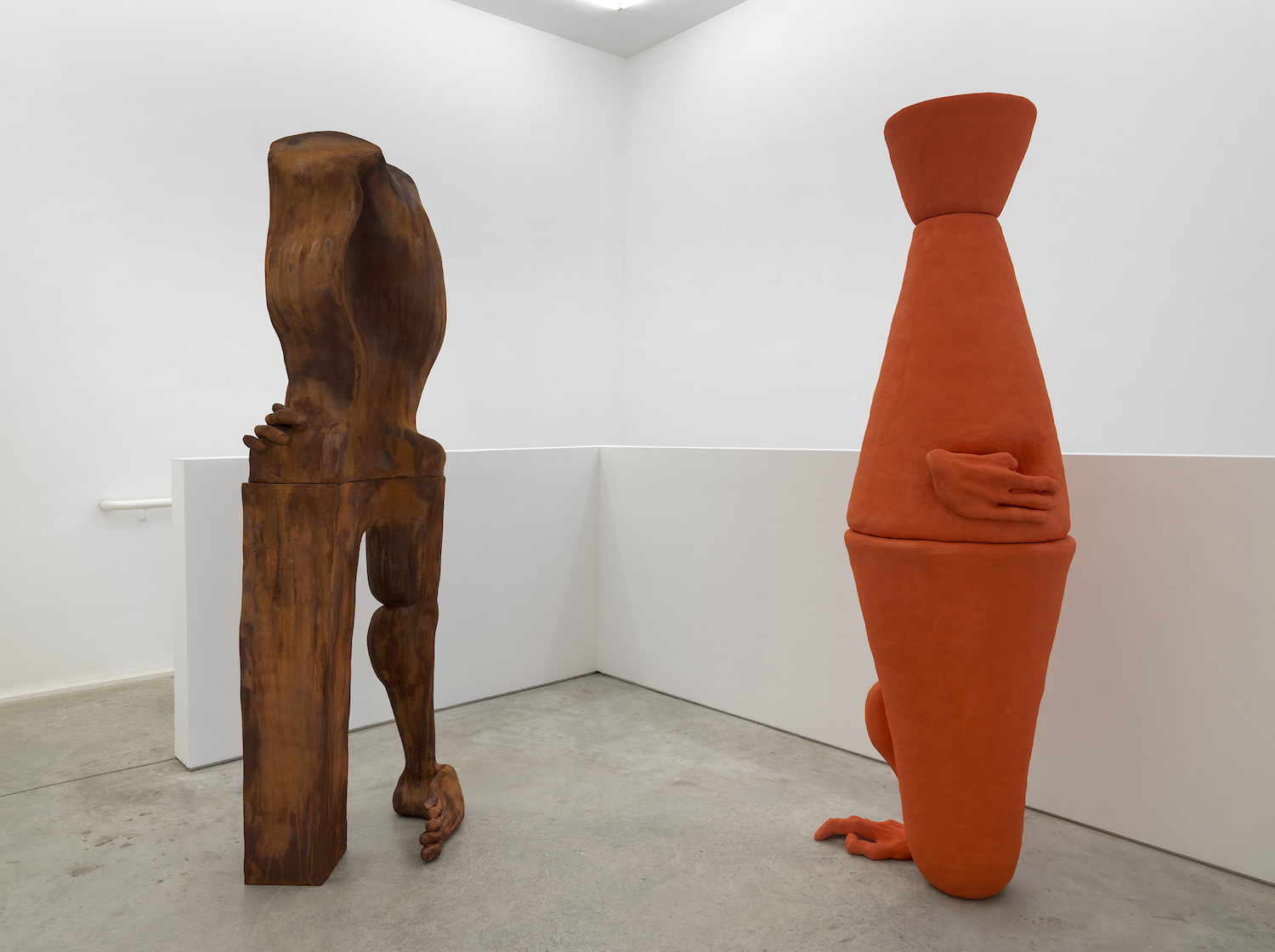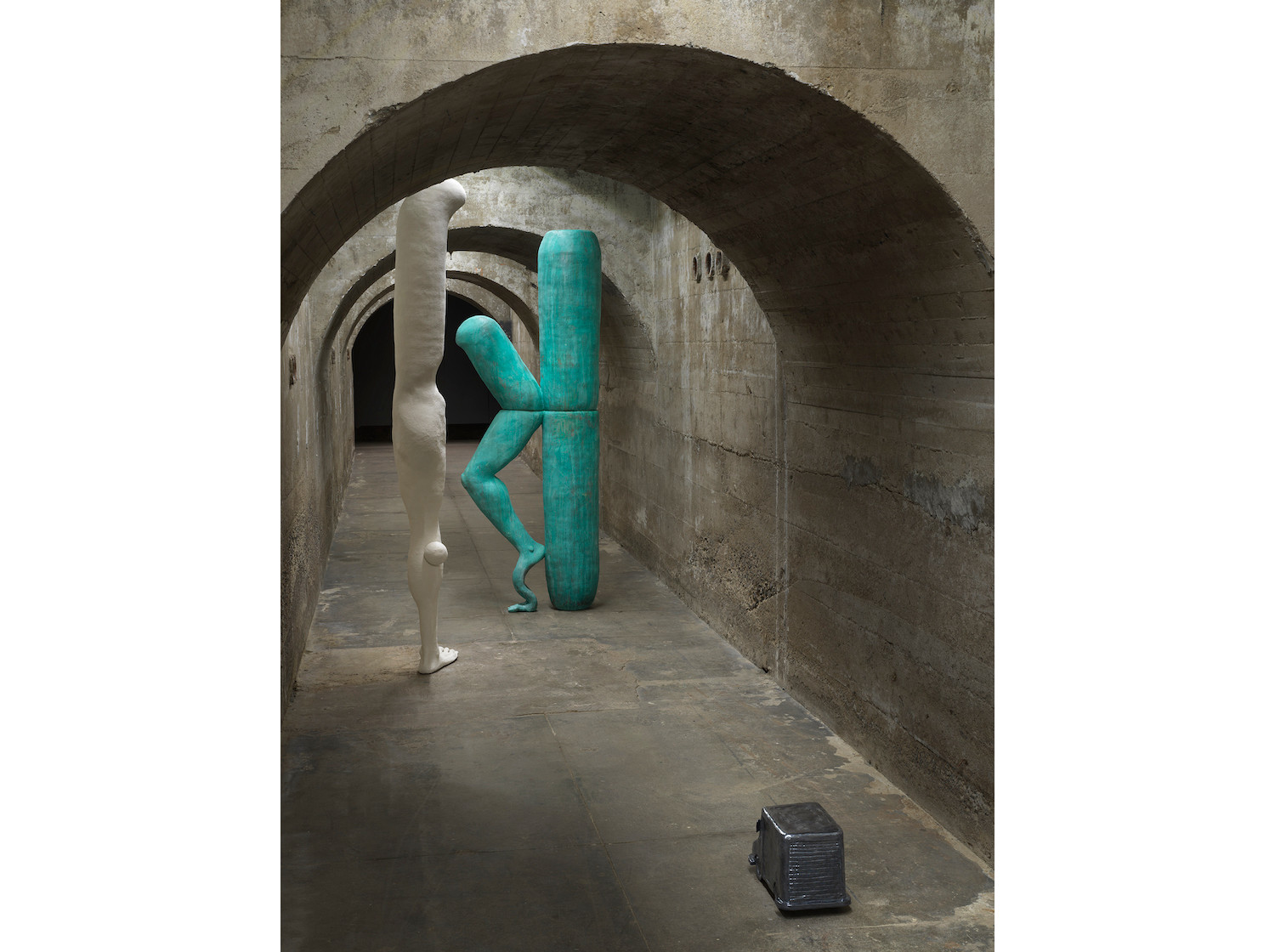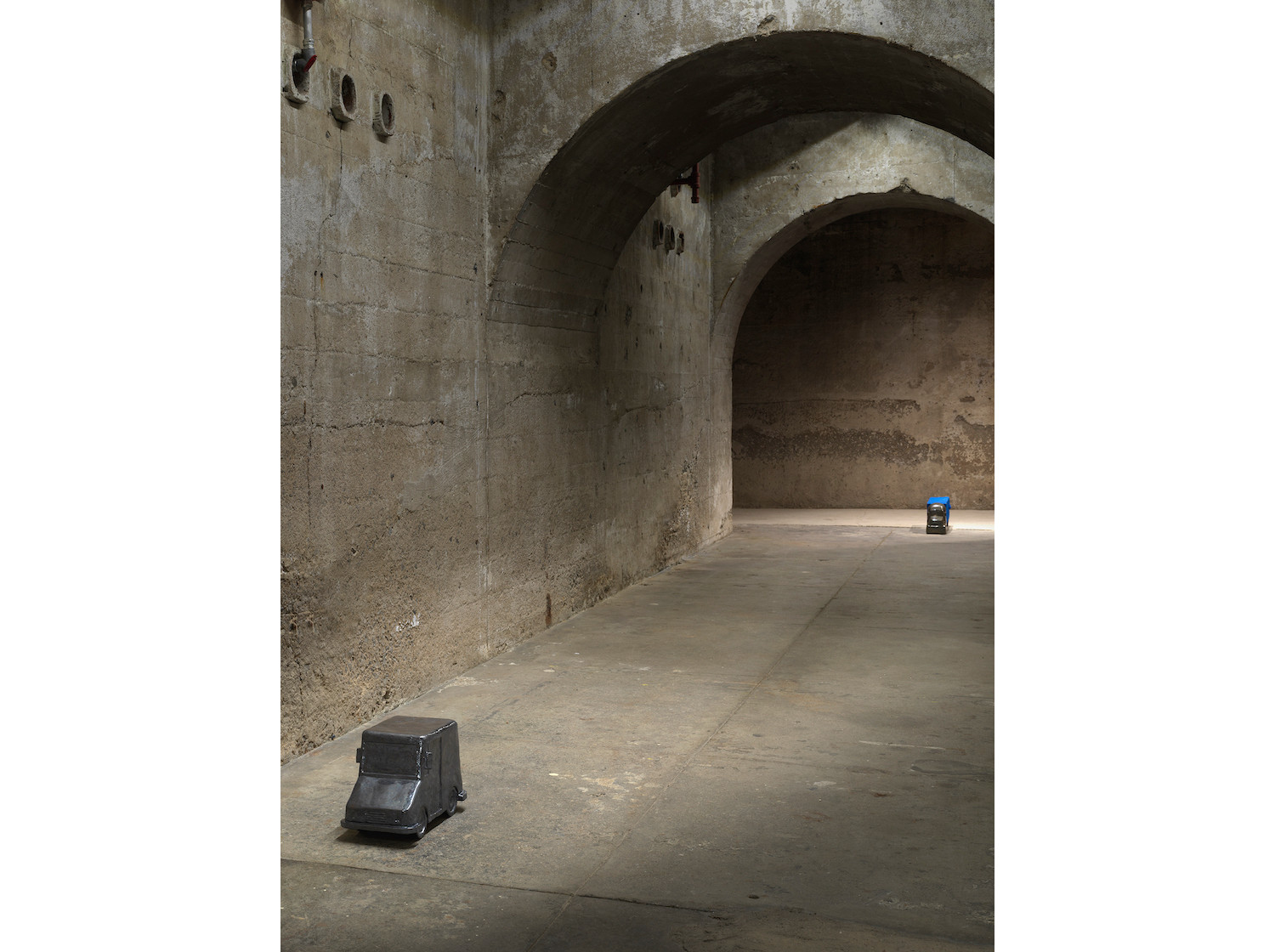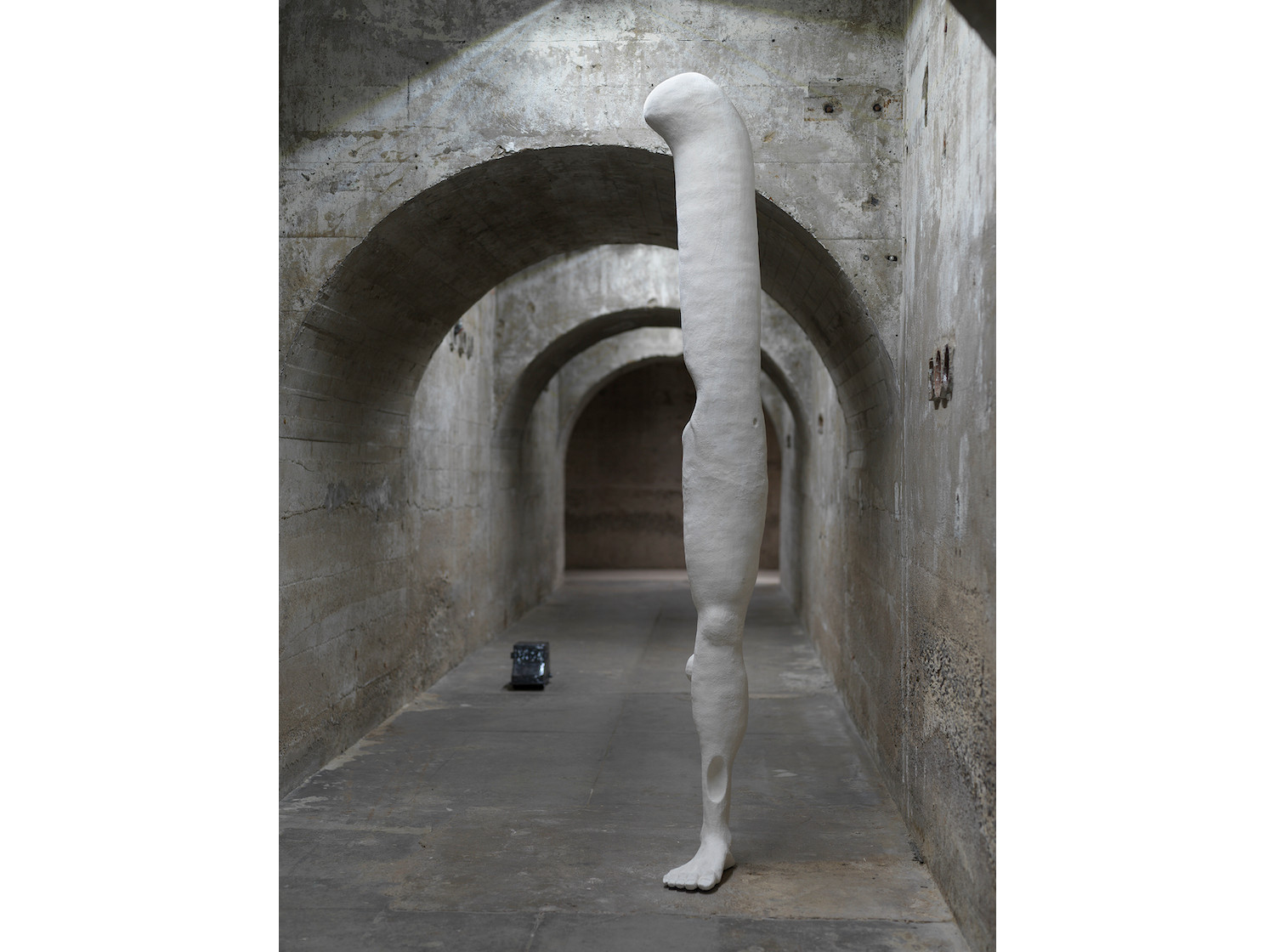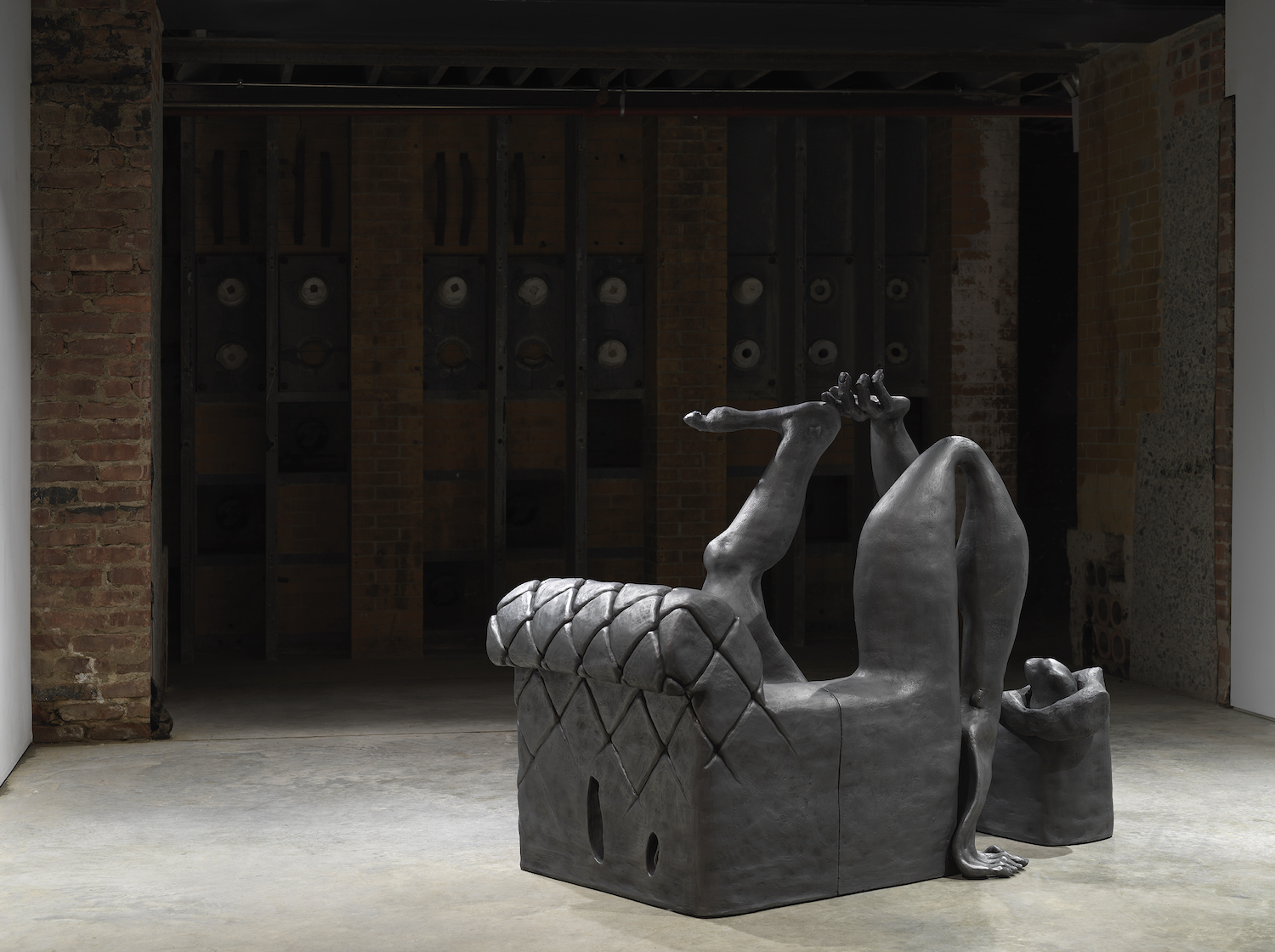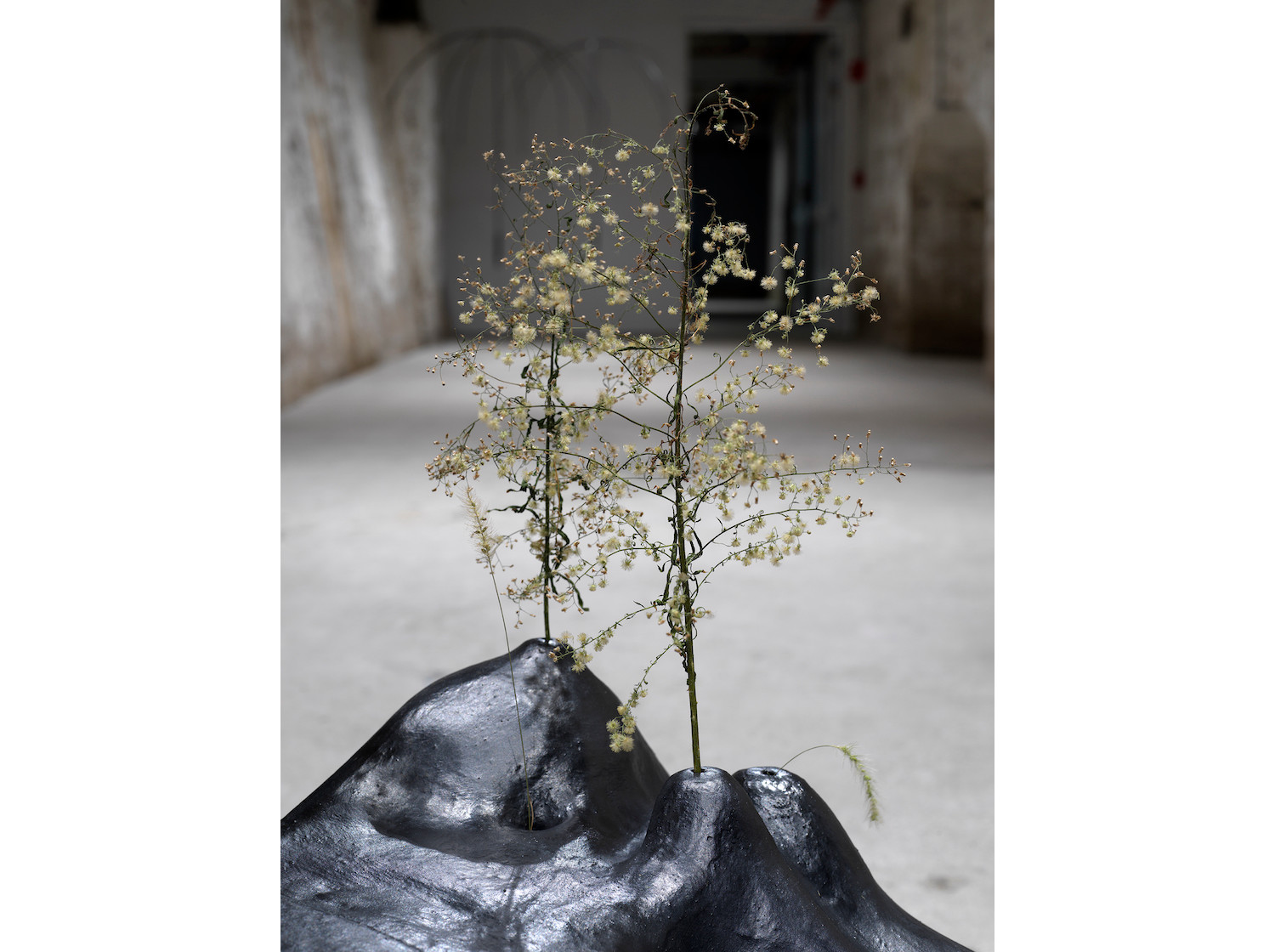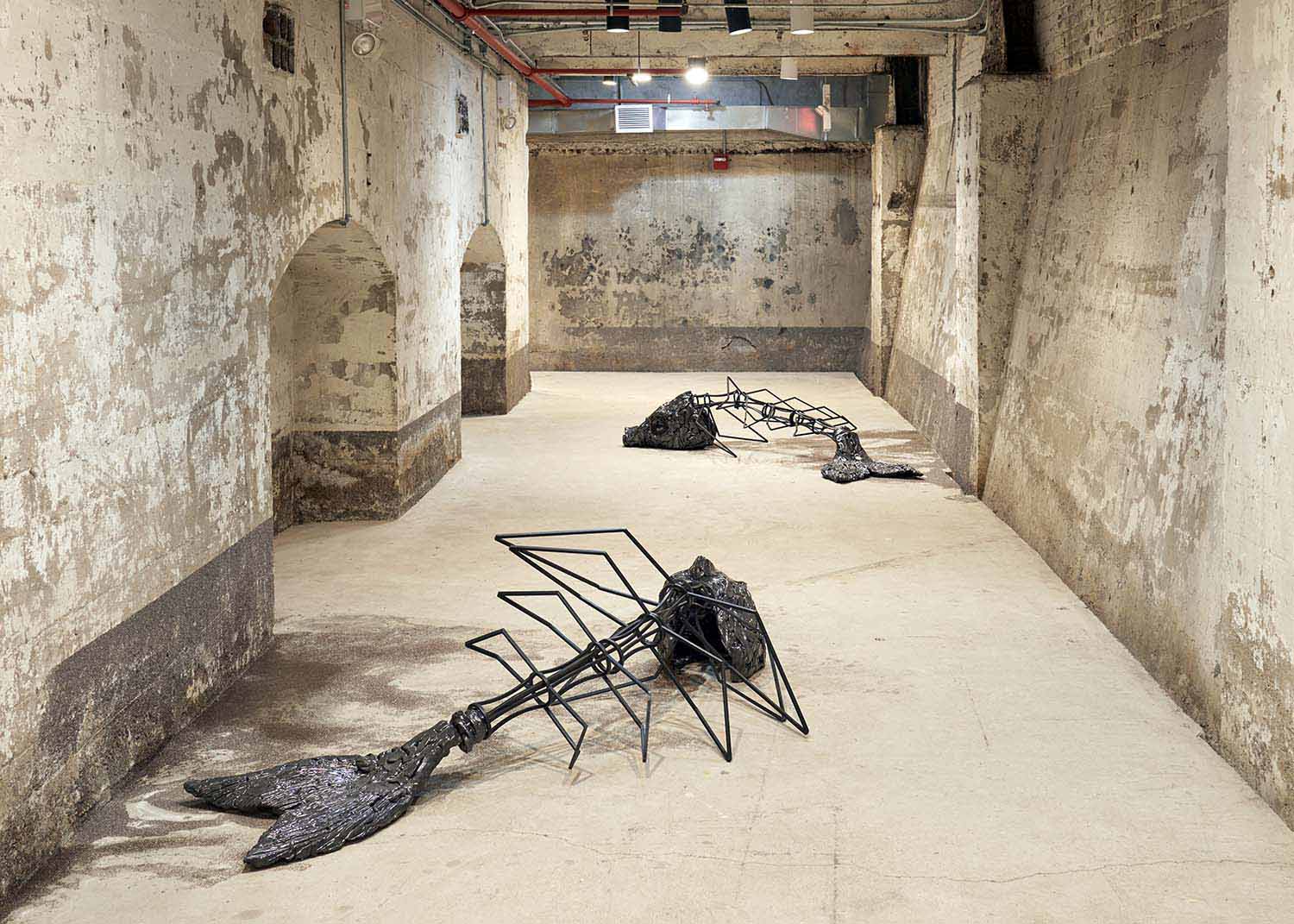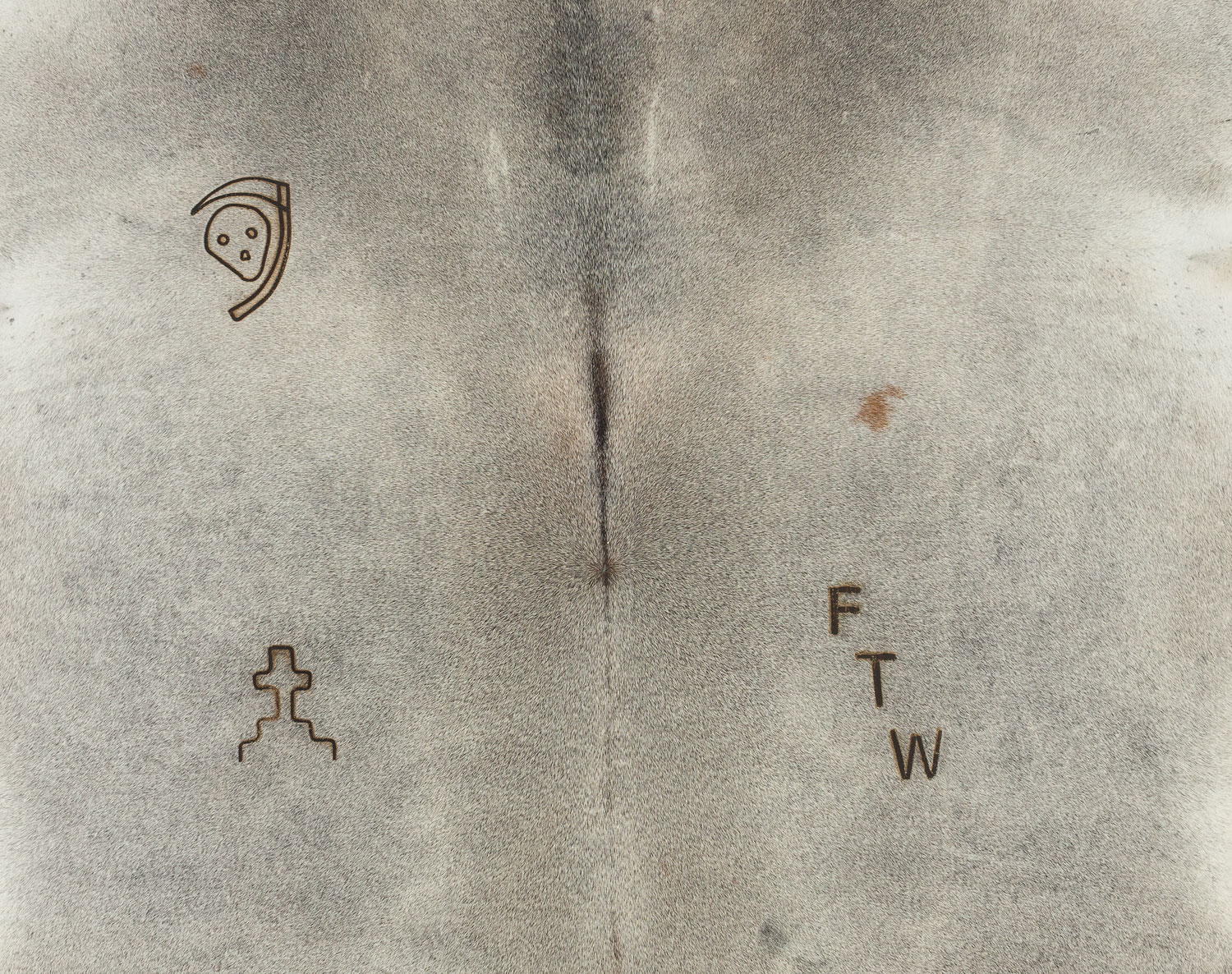For whatever reason, letting our hands turn a chunk of mud into what our imaginations conjure is both cathartic and freeing. Making “mud pies” as a child isn’t the same as sculpting a piece of marble into a smoothly rendered Apollo and Daphne, but the feeling of shaping unformed material — be it clay, wood, or whatever — touches something universally shared in us. Jesse Wine’s version of creating a lump of nothing into a fantastically shaped something taps into this universality, revealing the freedom inherent to making as well as a keen understanding of form and symbol.
The title of Wine’s show, “Imperfect List,” does well to describe the objects that make up the syntax of the British-born artist’s sculptural language: there are semitrailers, houses, apartment buildings, furniture, a head, and a bevy of hands and feet. While this collection of things might at first seem random, they are all things that evince movement — a moving leg and foot, a speeding truck, and even a home, where we cook and clean. Take 11:10 am / 15.10.1983 / 75 Heath Lane / Chester / United Kingdom / CH3 5SY (2020), a large, multipart work composed of a narrow yet large ceramic two-story house and a boxy ceramic structure topped by a surrealistic hilly landscape with a protruding leg and arm. Wine has placed weeds from the SculptureCenter’s garden in holes atop rising, mountain-like shapes on the larger, boxy section of the work, adding a whimsical flourish to an already playful sculpture. Its earthy graphite color helps it from becoming too fanciful a composition and anchors it to the more mundane sphere of the everyday. This isn’t easy in the bunker-like atmosphere of the museum’s lower galleries, but works such as I went outside mournful, and I hit pure air and Memory and responsibility are strangers (both 2020) add further lightheartedness to the show despite their titles. The former work is a Tonka truck–sized semitrailer with a glazed ceramic cab and yellowish foam trailer, jackknifed in a well-lit corner of the space, while the latter work — a quote from Scottish writer Ali Smith’s novel Autumn — looks like a graphite-covered and similarly scaled delivery truck.
In addition to the toy-sized smaller pieces and the larger, multipart work, the exhibition includes bigger — and perhaps stranger — sculptures, such as Imperfect List and The IRS (both 2020). Both works are taller than six feet, and both feature feet and legs; indeed, both are a foot and leg, at least of sorts. Imperfect List is a white ceramic truncated leg, whose foot flatly supports its upper section, while a baseball-sized orb attached to the calf adds a humorous flair. The IRS, much less humdrum than their agents’ reputations, is an oxidized copper-colored ceramic K-shape, in two-parts, with a floppy-looking foot acting as a kickstand for the more upright columnar side. The sculptures in this show go from dark-colored to brighter-colored, and indicate a fascination with combining seemingly un-combinable shapes and forms — they are a mixture of the colorful bulbous works of Ken Price and the sensuous, large-scale figurative works of Henry Moore, with a healthy dose of Max Ernst thrown in.
Making shapes from the shapeless is something not many of us do any longer — we’ve outsourced nearly every part of our lives. But, like the amorphous shape of a pile of mud, the freedom found in the pieces in this exhibition extend well beyond the boundary of their folds and forms and remind us of the pure pleasure of creating.

